Comics aren't just fun and visually attractive. Written, drawn, designed, and produced effectively they can be excellent and effective educational tools tailored to the specific needs of individuals and classes and enhance academic and social outcomes
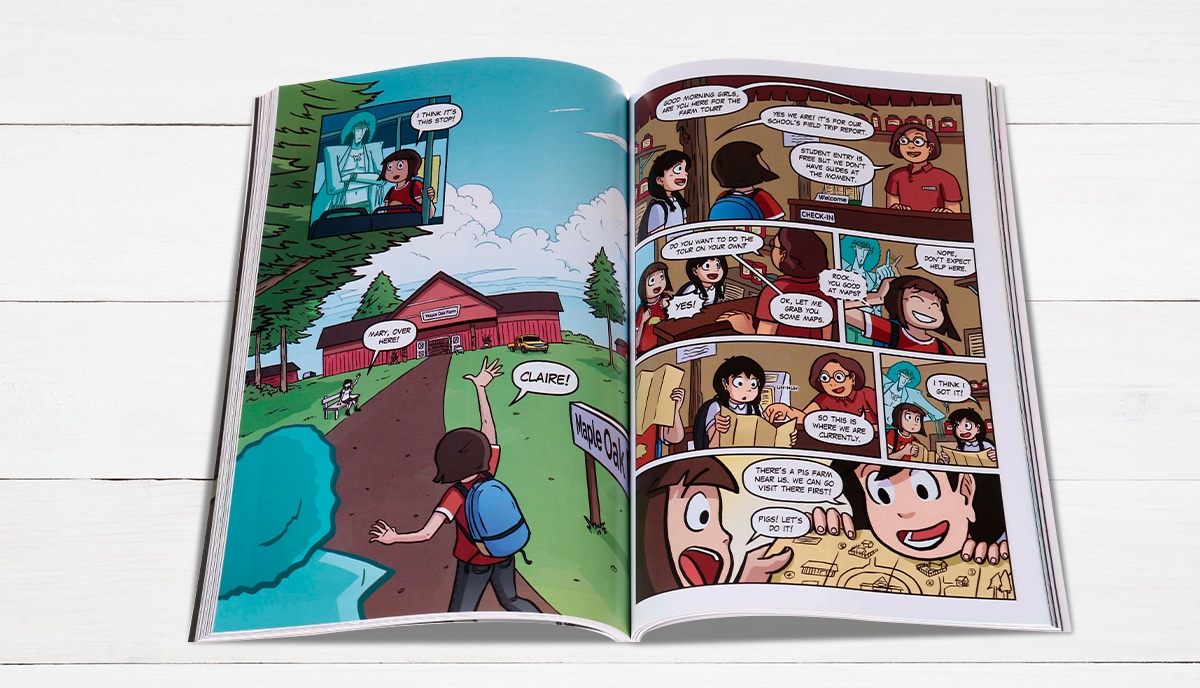
Comics have long been considered a form of entertainment, but more recently, they have also proven to be a valuable tool in education. As a teacher, trainer, or other educational professional, it’s important to recognize the benefits that comics can bring to the classroom. In this post—drawing on decades of experience working with teachers, schools, and universities to print superb academic books, yearbooks, and educational comics—we’ll explore how to use comics as teaching tools in the classroom to enhance learning, engage students’ attention, and promote critical thinking. From improving reading and writing skills to fostering creativity and cultural awareness, comics offer endless possibilities for educational enrichment.
Why use comics in education?
Comics have come a long way from being perceived as “mere entertainment” for children—although we think children deserve high quality entertainment, too, and the best comics have a valid role to play in providing positive leisure experiences. But after several years of academic research and practical application in the classroom, comics now occupy a unique position in the world of education, offering a powerful medium for engaging students more interactively with the material, promoting literacy, and teaching techniques of critical thinking.
As a teacher or other educational professional, we’d encourage you to consider the role comics could play in your pedagogic practice to open up new possibilities for effective instruction and increased student engagement. Several of the major academic publishers now produce comics specifically designed to support a range of curricula. However, in our experience, many teachers also enjoy designing and producing their own comics tailored to their specific needs. Others have seen the advantages in getting their students involved in designing the comics, too.
How comics can support reluctant readers
Reading and language development is a key area in which comics can play a significant role. As an educator, you’ll be painfully aware of the decline in general literacy in modern western societies—although the idea that comics can help may surprise you. While comics are primarily a visual medium, they also contain text, descriptive writing, and dialogue. One of the greatest strengths of comics is their ability to captivate the interest of even the most reluctant readers.
The combination of exciting imagery and text creates an immersive reading experience that can spark interest and motivate reluctant readers to begin to engage with the written word. For students who struggle with traditional text-based materials, comics provide a bridge to literacy by offering a visually appealing and accessible format.
But you needn’t take our word for it. The use of comics in education and the positive benefits they can have for teaching literacy in the classroom are attested by science. Literally thousands of studies demonstrate this fact.
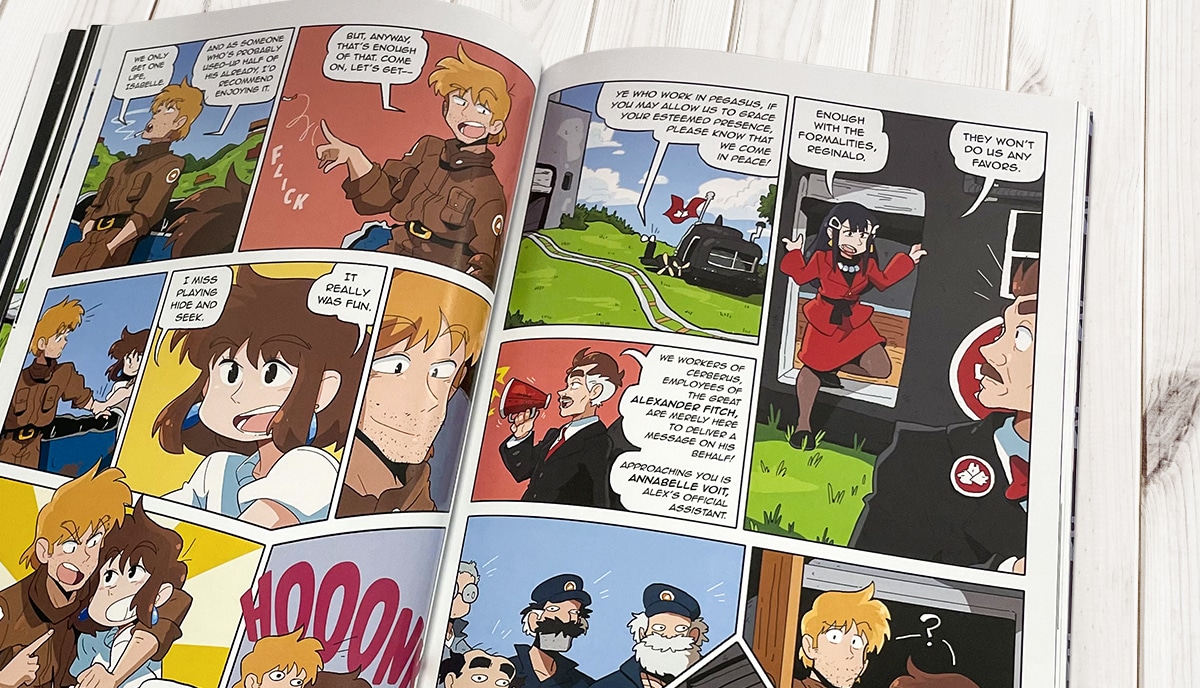
Comics in early-stage language acquisition
Comics also offer unique advantages for language learners of any age: pre-schoolers and first-graders; older children struggling with literacy; adults approaching English as a second language or who missed out on their education as children. The visual cues provided by the vivid narrative illustrations in comics help learners to understand the context and meaning of words, making the language learning process more intuitive, multisensory, and associative; all processes known to enhance learning. Also, the reduced text in many comics allows beginners to practice reading without feeling overwhelmed by a cascade of unfamiliar words, helping them to build confidence and fluency.
Comics for creative skills development
Comics are not only a tool for reading but also a powerful medium for exploring creative expression, narrative form, and design. By analyzing and creating their own comics, students can explore and develop their writing skills, storytelling abilities, and understand how to design narrative structures. Comics provide a unique opportunity to explore character development, plot structure, and visual narrative techniques. Students learn to sequence events, create dialogue, and convey emotions through a combination of images and text. The visual nature of comics encourages students to think critically about storytelling elements such as plot, setting, and character motivation.
In an increasingly multimedia environment both at home and work, comic books can help to promote visual-verbal connections, enabling students to understand the relationship between images, text, and meaning. This skill is essential in developing media literacy and understanding how meaning is constructed through different modes of communication. By engaging with comics, students can enhance their ability to analyze and interpret visual information and process multiple layers of significance.
Using comics in science and social studies
Comics can be an especially valuable tool for teaching content in subjects such as science and social studies. These subjects involve helping students to analyze and make connections between complex concepts and historical events, all of which can be made more accessible through visual storytelling. For example, comics can illustrate scientific processes, explain biographies and events from history, or explore social issues in a way which makes the narratives more interesting and concepts easier to grasp.
The best educational comics—often the ones you create yourself, tailored to your students’ needs—can effectively clarify difficult concepts without sacrificing depth. By using visual representations and concise text, comics can break down complex ideas into digestible chunks, describing step-by-step processes, or presenting multiple elements simultaneously in a way that highlights how these various elements interact. This approach helps students grasp challenging concepts and encourages active engagement with the material.
When it comes to helping students look critically at social and historical issues, comics can play a fascinating and effective role. If a comic presents multiple drafts or diverse perspectives on a single issue or range of related events, students can apply critical thinking and analysis to evaluate each iteration and develop an understanding of both the content and the context of the subject matter. Comics used in this way can also provide valuable focal points to initiate classroom discussions and debates. Students are challenged to interpret visual cues, analyze character motivations, and identify underlying themes and messages. They learn to approach and evaluate a variety of texts from multiple perspectives.
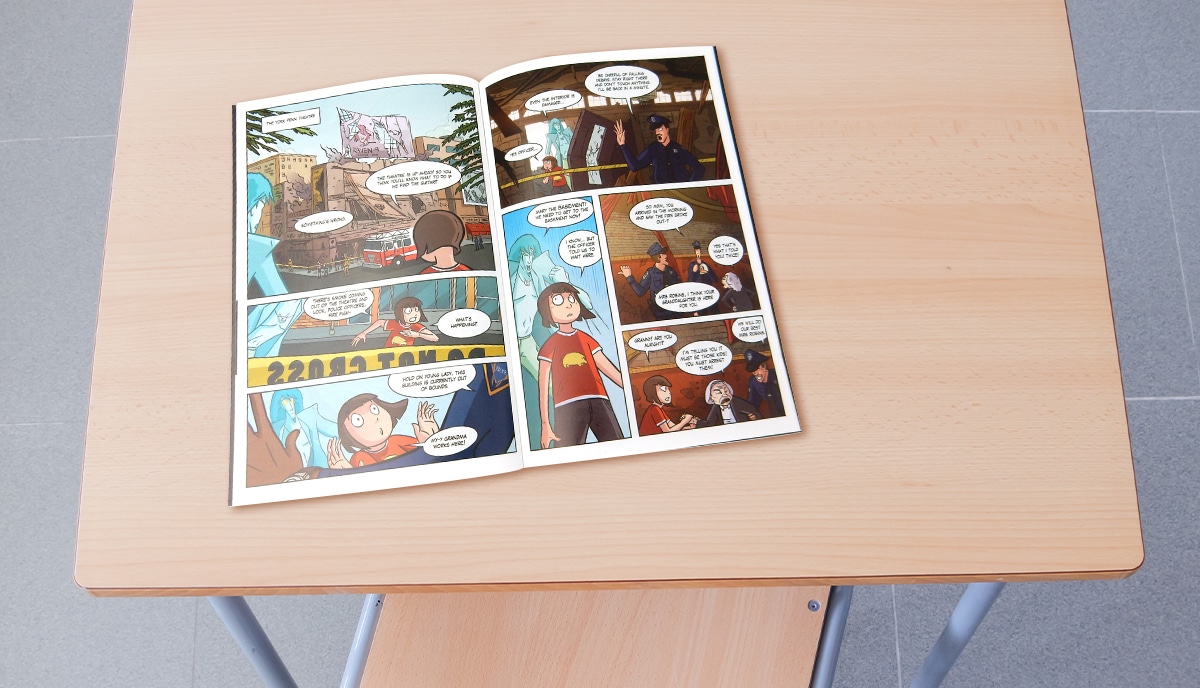
Multimodal learning, media literacy, and communication with comics
Multimodal learning—as the name suggests—involves engaging students with multiple modes of communication, which is an essential skill in today’s digital environment and prepares students for the future of work. Comics provide an ideal medium for introducing multimodal learning in the classroom, as they combine visual and textual elements and can be presented and interacted with in both analog and digital formats.
By engaging with comics, even the youngest students develop the ability to analyze and interpret information from different modes, enhancing their media literacy skills. So, comics offer unique opportunities to critically analyze the use of visual techniques, such as panel layout, color, and composition. Working with printed comics helps kids and older learners to build their comprehension of the origins of digital structures in pre-digital design and to grasp how core analog design and communication skills are transferable to other forms of media, empowering students to become discerning consumers and creators of multimedia content.
Comics also provide a platform for students to express their thoughts, ideas, and emotions in a visually engaging format which deploys eye and motor skills together with artistic and aesthetic sensibilities, language skills, and functional approaches to communication. By creating their own comics, students develop an integrated range of fundamental skills which have a life-enhancing effect beyond the confines of the classroom and the specific educational focus with which they are engaged. This process fosters creativity, self-expression, and the ability to effectively communicate ideas, feelings, and clear messaging through a wide modal spectrum.
Diversity and representation in comics
Our world is ever more global and multicultural and our young students are growing up in a world of rapid social change. Comics have the power to promote cultural awareness and empathy by representing diverse perspectives and experiences. Through comics, students can explore different cultures, traditions, and identities, fostering a more inclusive and tolerant classroom environment. Comics featuring diverse characters and stories help students develop empathy and appreciate the richness of human diversity.
Exploring social issues and identity with comics
Comics can provide a platform for exploring and addressing social issues and identity. They can tackle topics such as racism, social justice, gender equality, and LGBTQIA+ rights, sparking meaningful discussions in the classroom and providing a springboard for students’own creative and analytical work. By engaging with these narratives, students can gain a deeper understanding of the complexities of the world around them, contextualize diversity, and use these opportunities for self-reflection and a deep consideration of individual rights and responsibilities in the context of social responsibility and collective values.
How to use comics in the classroom
When incorporating comics in the classroom, it is important to select high-quality materials that support specific educational objectives. There are several resources available for finding age-appropriate comics and graphic novels, including online platforms, libraries, and educational publishers. Educators should consider factors such as content, complexity, and cultural relevance when choosing comics for their students.
However, the best solution is for teachers and other educators to develop, design, and print their own comic book educational materials. Many teachers will already have the necessary skills to do this work, others to learn what’s needed. Otherwise, engaging the services of a professional graphic designer may offer an alternative solution. But whether you buy ready-made comics or create your own, it’s important to understand the best practices for integrating comic books effectively into the classroom learning environment.
Integrating comics into lesson plans
Comics can be integrated into lesson plans across various subjects and grade levels. You can use comics as a pre-reading activity to introduce complex texts, as a tool for teaching writing and storytelling skills, or as a means of exploring social issues and historical events. By incorporating comics into lesson plans, you can engage your students’imaginations and interest and enhance and reinforce their learning. The best ways to use comics in the classroom are:
- As introductory texts
- As springboards for discussion and debate
- As reinforcement and summary material
- As inspiration for students’own creative work
You can also use comics as tools to assess learning outcomes. Assessing learning through comics can be done through various methods, including written reflection, oral presentations, and artistic expression. You can provide prompts or questionnaires that require students to analyze, interpret, and reflect on the comics they have read or created. By assessing learning through comics, you can develop clear measures to gauge students’ comprehension, critical thinking skills, and creativity.
Addressing stereotypes and stigma
Despite all the benefits of comics in education which we’ve just looked at, there are still stereotypes and misconceptions that you may need to address when you’re exploring how to use comics as teaching tools in the classroom. You may find that principals, members of the board of trustees, parents, and so on may view comics as superficial, lacking literary value, or even potentially damaging to children’s educational development. You can address these stereotypes and misunderstandings by highlighting the educational benefits of comics, showcasing examples of high-quality graphic novels, and sharing success stories of using comics in the classroom; not to mention signposting doubters to the many academic and scientific studies which demonstrate the efficacy and advantages of comics ineducational contexts. As a teacher or trainer, you can play a crucial role in advocating for the use of comics in education. By sharing success stories, research findings, and personal experiences, educators can help change the narrative around comics and promote their value in the classroom.
Tools and resources for creating comics
Creating comics for use in the classroom has become easier with the availability of subscription based professional level graphic design software such as Adobe Illustrator and InDesign (we recommend the Adobe suite as it’s what we use ourselves) which provide intuitive user interfaces, robust features, and a broad spectrum of customization options. These tools offer greater flexibility in layout design, character creation, and visual effects than free online tools. While they may require a steeper learning curve, graphic design software can empower students to take their comic creations to the next level and enable teachers and trainers to develop tailor-made comics designed with their students and learning outcomes in mind.
As an educational professional interested in incorporating comics in the classroom, you can benefit from engaging with professional organizations and publications dedicated to this field. Organizations like Reading With Pictures and Teaching Comics provide valuable resources, research, and networking opportunities.
Comics have proven to be a powerful educational tool that can enhance learning, engage students, and promote analytical thinking, discussion, and creativity. As an educational professional, embracing the power of comics in education opens up exciting possibilities for instruction and student engagement. By incorporating comics into the classroom, you can foster a love for reading, inspire creativity, and create a dynamic learning environment that caters to diverse learning styles and interests.
Talk to us!
Whether you’re just planning your classroom comic book or you’re preparing your completed files, we’re always happy to hear from you either to chat through how we can help you realize your educational comic book project or to give you a personalized quote on printing. Get in touch. We can’t wait to help you make a comic as beautiful as it will be useful.






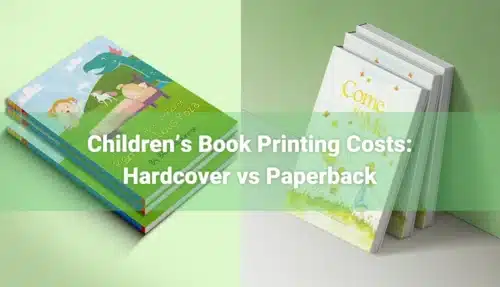

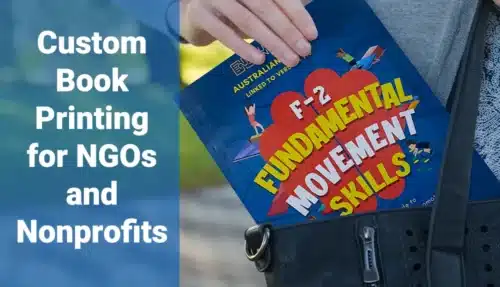
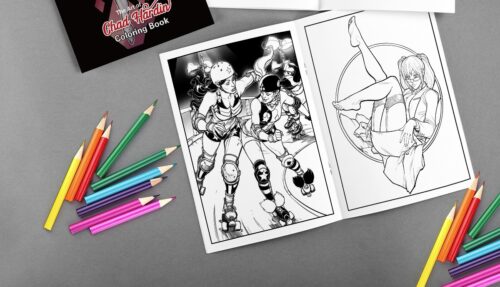
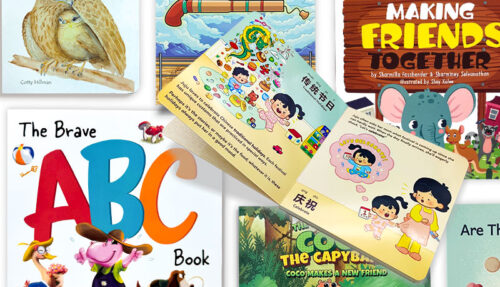
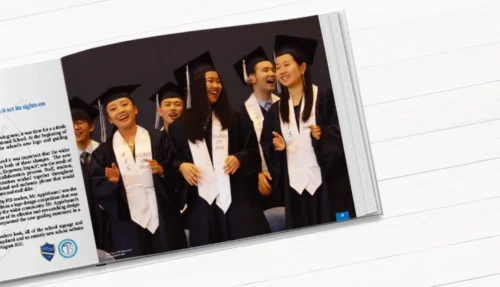
2 thoughts on “How to Use Comics as Teaching Tools in the Classroom”
very beneficial and informative.
Hi Sidra,
Thank you!